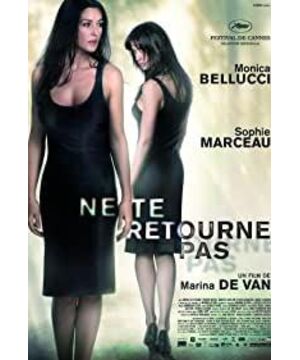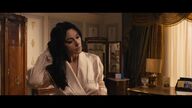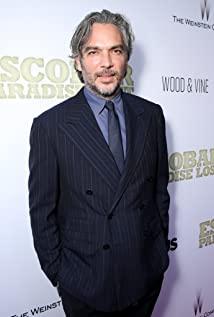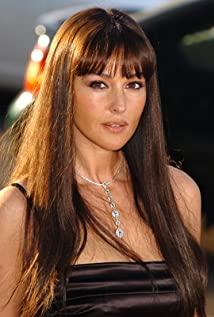How many loved moments of glad grace you
loved your beauty with love false or true
But one man loved the pilgrim soul you
Yeats wrote this is the case, Duras also wrote on Valentine Lane. What a familiar sentence: "You were a young woman at that time. Compared with your appearance at that time, I love your now devastated face more."
Two peerless ladies on the poster, I dare not say that they are younger than them. They were amazingly beautiful at the time, and I prefer their now devastated faces. But when the big screen featured every wrinkle on their faces, every inch of withered skin and loose muscle lines, I didn't feel shocked. Although the audience who knew them in the movie theater kept whispering, getting old, getting old.
Because I don't believe that time is the enemy of women.
But this does not mean that I believe in stupid things like "aging gracefully". No one's aging is graceful. A woman’s aging is accompanied by helplessness, decadence, panic, depression, melancholy, and fear; there is no decay that is pleasing to the eye: water loss in petals, color fading, dryness, and decline. No woman can calmly face the passage of time and youth, whether it is Duras who writes "I am old" and is extremely smart, or Audrey, a fake model of elegance.
And I mean, no matter what their appearance looks like on the big screen, Sophie's drooping eyelids have not changed the innocence in her eyes, and Monica's withered mouth can't hide the warmth of her lips. So even if you inevitably notice how relentless time is to carve the traces of time on their once glorious body; but at the same time, you can’t deny how time patiently watered them, plumped them, carved them, and interpreted them. they. And if all of this were only described as "elegant", it would be too frustrating.
Second, the mirror
The front and back of a coin are two mirror images inside and outside the mirror. One entity, one shadow, yet interdependent. On the train heading for Italy, Monica leaned against the window. The scenery outside the window quickly passed, and Sophie's face appeared on the mirror. At this moment, the positioning of the entity and the shadow body is obvious: Monica is the entity, and the shadow body is actually the Sophie on the mirror side. This reminder is at the beginning of the film, Sophie discovered from the DV that Monica’s face was flipped-at that moment Sophie was the so-called entity, and the body was Monica in the DV image-the audience was deceived and the mirror was reversed. Turn, the coin turned over.
The split personality cannot explain why Monica can see her brother's face when she grows up, nor can it explain why the furnishings of Monica's birth mother's house have not changed after so many years. And the spiritual route of ghost possession is not the keynote of this movie. If you want to have the fun of watching movies, you should let go of the stereotyped thinking of using the so-called genre to restrain the movie. Because the director's handling is very arbitrary, it can even be said to be very willful. Supported by technique and logic, the willful and freehand processing will highlight the characteristics of the film and the unconstrained artistic tension. It can be said that the birth of all styles cannot be separated from this willfulness.
So I don't think this film focuses on psychiatric problems or supernatural events, but a process of concealing and separating the entity and the shadow from each other. When Sophie was the entity at the beginning of the film, Monica stayed in the shadow role as a childhood phantom, Sophie covered Monica; and little Monica replaced her mother, brother, home furnishings and other shadows in Sophie’s life. At the time of the entity, it was Monica covering Sophie. When Sophie discovered the furniture changes, the process of separation began. On the one hand, Sophie gradually returned to the position of the shadow body. On the other hand, the shadow body replaced by Little Monica was also replaced by reality. This explains the husband and children. And her own patchwork face-half Sophie and half Monica; but the key mother has not changed, this time makes Sophie/Monica feel safe. But once the mother changes, the change cannot be stopped-Monica and Sophie are completely separated; in the casino, the terrible changes in facial features fully demonstrate this. In the end Monica became an entity, and Sophie's face was mirrored in the train window, returning to the fantasy of shadows.
The transition between reality and reality in the mirror is what the poster wants to express. As an entity, Sophie asks, "Who am I?" But a single Sophie and a single Monica are not the real answers. The two separated at the end of the film sit side by side, smiling and looking at each other-who is who owns. The shadow is not important, but the key is, who can become a whole independent of his own shadow?
Third,
life cannot be traced back to life is a one-way street.
Time only flows in one direction. The white horse crossed the gap. Youth flies away like breath on the mirror surface. The flowers bloom and then wither. Peerless Beauty is irreversibly aging on the screen. The surface is calm and unhurried, but the heart is panic and sad. Because the place was too dazzling before, so the process of withering is unbearable. However, the other side of this devastation and despair is the palpitating beauty polished by time. It took so much patience and determination to get rid of those delicate, fragile and redundant youth branches cruelly, and finally left behind what a pair of beautiful two-flowered flowers in the illusion of light and shadow, blooming in the dark, incomparable .
Only by walking on the one-way street can they be undefeated forever.
View more about Don't Look Back reviews










